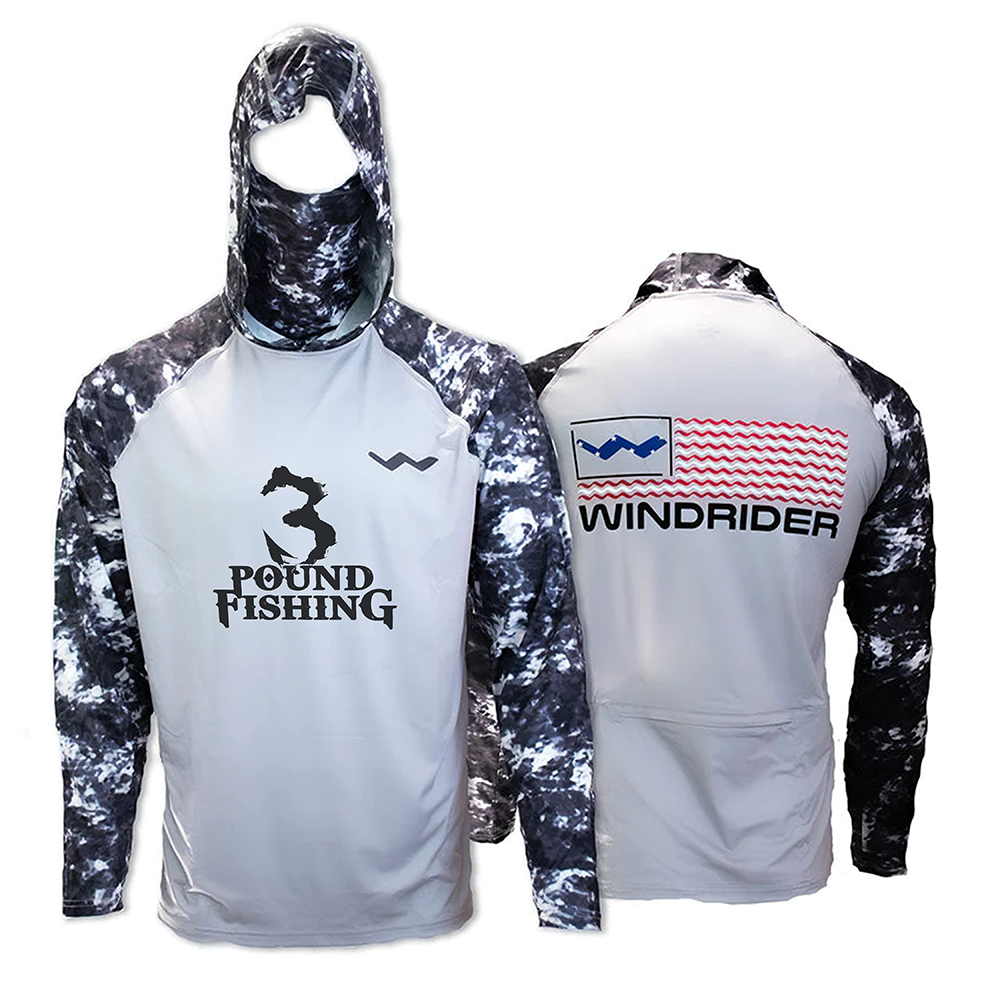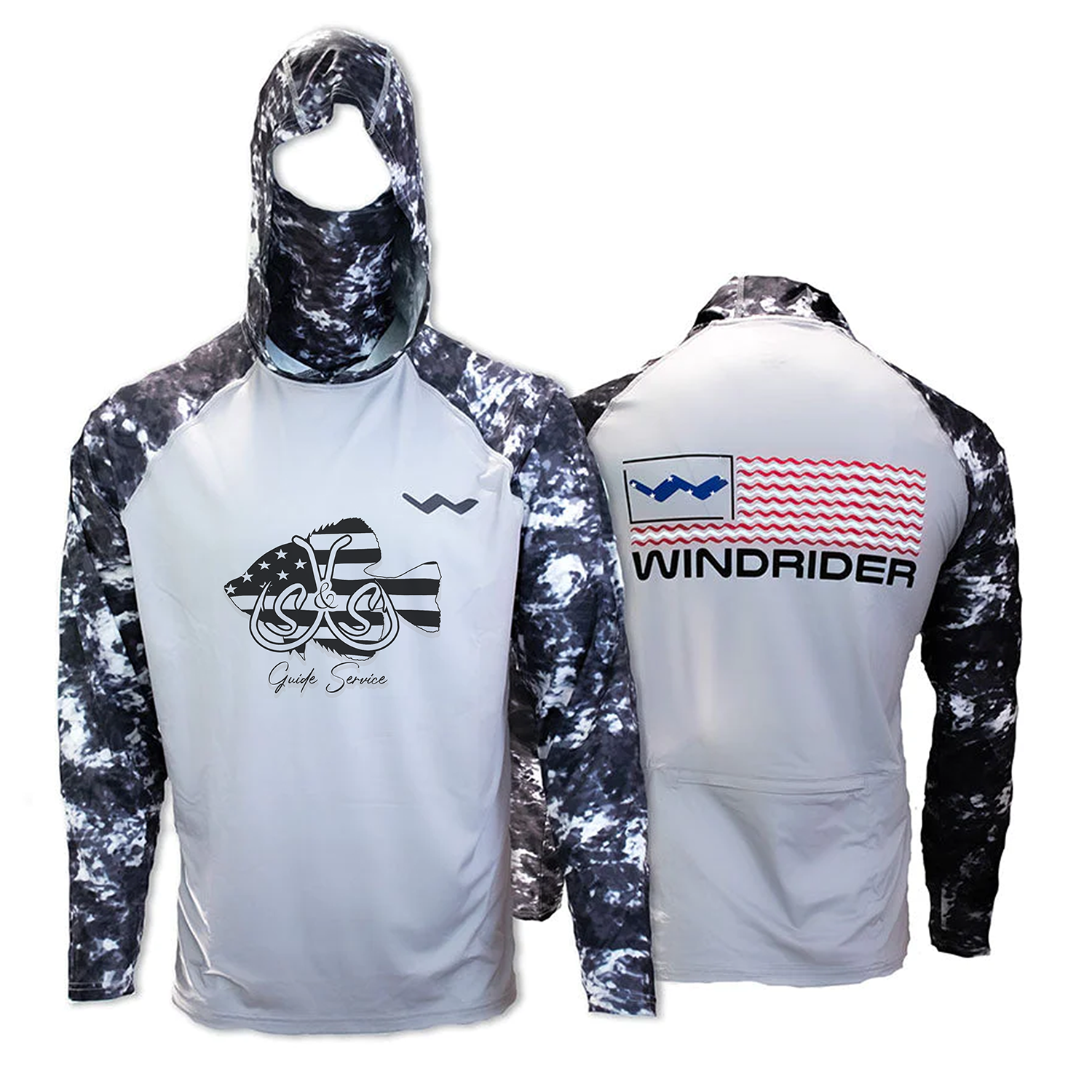The Physics Behind Color and Heat
Dark colors swallow wavelengths of light, turning incoming electromagnetic energy directly into heat. Light hues by contrast bounce back majority of wavelengths, thwarting energy absorption and keeping temperatures down. That's why strip of asphalt can bake like oven on summer day while slab of white concrete remains noticeably cooler, even though both receive same amount of sunlight.
Same physics applies to fishing shirt fabrics. Navy-blue shirt soaks up 70-80% of incoming solar radiation, turning that energy into heat you feel as warmth against skin. White shirt by contrast reflects about 80-90% of radiation, preventing energy from becoming heat and keeping both fabric and your body cooler.
Thermal-imaging data make it clear that temperature gaps aren't theoretical—they're sizable and measurable. In tests carried out in full sun with surrounding air at 95°F, numbers come out as follows:
- White fishing shirts: surface temperatures around 98-102°F
- Light blue fishing shirts: surface temperature 102-108°F
- Light gray fishing shirts: surface temperature climbs to 108-115°F
- Navy fishing shirts: surface temperature runs roughly 115-122°F
- Black fishing shirts: often heat surface up to roughly 120-125°F
That 20-25°F gap between white and black fabrics directly shapes how comfortable you feel during 8-10 hour fishing day in tropical heat.
White: Cooling Performance at Its Pinnacle
In pure physics terms, white emerges as unrivaled champion of cooling for fishing shirts. It outshines every hue in reflecting solar radiation. For anglers who place temperature management above all else, white is optimal choice.
Cooling benefits:
- Mirrors 80-90% of sun's energy, infrared heat, and everything else
- Remains coolest to touch among all color choices
- Delivers maximum cooling effect when heat surges into 90-100°F+ bracket
- Remains comfortable when air barely stirs
Practical considerations:
- Surface is marred by stains, splatters of fish blood, and generous coating of dirt
- Might need to wash often to keep appearance crisp
- In shallow water, flash of stark white often startles wary fish
- Visually conspicuous in any setting (good for safety, though occasionally hindrance to stealth)
Professional captains and guides working in pristine offshore or open-water conditions often choose white for maximum comfort during long days in intense sun. Cooling benefit outweighs stain concerns when you're focused on offshore fishing rather than handling dirty bait or bloody fish constantly.
Light Blue: The Balanced Choice

Light blue emerges as most popular fishing shirt color among both recreational anglers and professionals. It provides near-white cooling performance while offering superior practical benefits for real-world fishing.
Cooling performance: Light-blue fabric bounces back 65-75% of sun's rays, so its surface runs only about 4-6°F hotter than white counterpart. On water, that sliver of warmth is practically invisible to anglers. Light-blue Helios shirt still keeps fishermen comfortable when heat is unforgiving, matching performance of white version.
Stain-resistant capability: Light-blue does good job of hiding fish blood, bait smears, and everyday grime that would otherwise stand out on white shirt. Brown or red stains that scream on white fabric practically dissolve into pale blue hue, making them far less noticeable. As result, garment stays looking fresher for stretch between washes—particularly valuable perk on multi-day fishing trips where laundry is luxury.
Stealth in clear water: Many experienced anglers believe light blue provides better stealth in clear water fishing scenarios. Color approximates sky tones, potentially reducing visual profile when fish look upward from below. While actual effect on fishing success is debatable and probably minimal, psychological confidence matters to serious anglers.
Professional appearance: After day of handling fish and battling salty sea conditions, light-blue hue stays crisp and professional. Guides and captains appreciate that it lets them appear polished to clients from sunrise through afternoon without stains on clothing.
For most anglers, light blue feels like perfect middle ground—cool enough, good at hiding stains, and still effective on water. It's default color that seems to work in range of fishing situations.
Light Gray: The Shade for Pros

Light gray ranks third in cooling performance but first in some practical categories that matter to professional fishing captains and guides.
Browse our rain gear collection for more options.
Cooling performance: Light gray reflects 50-60% of solar radiation, maintaining surface temperatures approximately 6-10°F warmer than white. While measurably less cool than white or light blue, light gray still performs dramatically better than medium or dark colors. In moderate heat (75-85°F), difference becomes negligible. In extreme heat (95°F+), you notice difference but it remains tolerable.
Stain concealment: Light gray provides best stain concealment of any light color option. Fish blood, bait juices, and general marine grime virtually disappear against light gray fabric. For professional captains handling hundreds of fish weekly, this stain resistance maintains professional appearance throughout long seasons without constant washing.
Versatility: Light-gray shade holds its own across range of activities—whether casting line, handling boat, moving about marina, or just slipping into outfit. Many seasoned anglers prefer fishing shirt that keeps its purpose under wraps so it can drift into non-fishing contexts without raising eyebrows.
Guides and captains who favor professional look and prioritize stain resistance over squeezing every ounce of cooling out of fabric will find light gray particularly appealing option. Modest dip in cooling performance is readily compensated by reduced maintenance demands and way color retains fresh appearance for noticeably longer stretch between washes.
The Dark Color Reality
Some fishing shirts ship in navy blue, dark green, or even black. While these colors have passionate advocates, physics works against them for hot weather fishing.
Because dark colors soak up 70-85% of sun's energy, they end up 15-25°F hotter than comparable white fabrics. In practice, that means black fishing shirt on 90°F day can climb to surface temperatures of 120-125°F—hot enough to feel genuinely uncomfortable and to make anyone sweat even when material boasts excellent moisture-wicking properties.
Reasons to favor dark colors:
- Some anglers swear that draping themselves in dark shades trims their visual silhouette, slipping past fish's keen eyes
- Dark colors show least staining of any option
- Number of anglers are drawn to style of dark fishing attire
- Navy blue has traditional fishing/maritime cultural associations
Why dark colors aren't always best choice:
- Significantly hotter under direct sun, sapping comfort and boosting odds of heat stress
- Increased sweating challenges moisture-wicking systems and leads to faster dehydration
- Stealth benefit is questionable - fish primarily see silhouette rather than color
- Contemporary light-hued technical textiles generally manage to keep stains at bay enough for bulk of typical applications
When temperature stays under 75°F, dark-colored fishing shirts suddenly become asset since their heat-absorbing quality turns into modest source of warmth rather than drawback. Anglers out in Alaska and Pacific Northwest often reach for those tops, enjoying slight extra heat they provide during early-morning outings in chill.
In scorching flats fishing—anywhere temperature climbs past 85°F—dark hues are ill-advised pick, trading lot of comfort for only doubtful payoff.
Practical Recommendations by Fishing Style
Offshore trolling and open water fishing: Choose white or light blue for maximum cooling during extended sun exposure with no shade. Stains matter less when you're primarily handling lines and lures rather than bloody fish constantly. Bright colors also improve crew visibility for safety.
Inshore fishing and backcountry: When it comes to performance, light blue hits sweet spot—excellent cooling, solid stain concealment, and hint of stealth in clear water. Professional guides unanimously favor light blue in those environments.
Surf-side and jetty fishing: Light gray or light blue work well. Both conceal sand, salt stains, and general weathering that beach fishing creates. Slightly better stain resistance of gray helps maintain appearance through entire beach sessions.
Bass fishing in freshwater: Light hues across board—pale blue, muted gray—usually prove effective. Because freshwater fishing tends to involve less messy handling than saltwater, white emerges as more practical choice. That cooling advantage becomes especially valuable during summer months on southern reservoirs.
Professional charter and guide work: Light blue ranks first, light gray second. Both maintain professional appearance through long days of client interaction and fish handling. Combination of cooling performance and stain resistance supports professional image essential to charter businesses.

